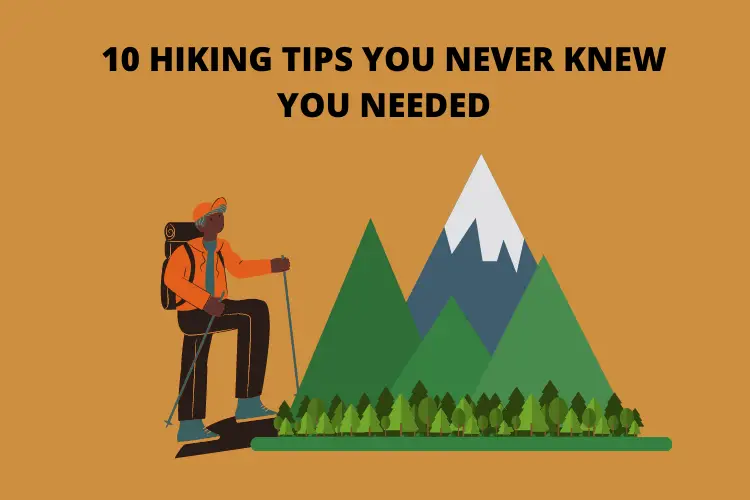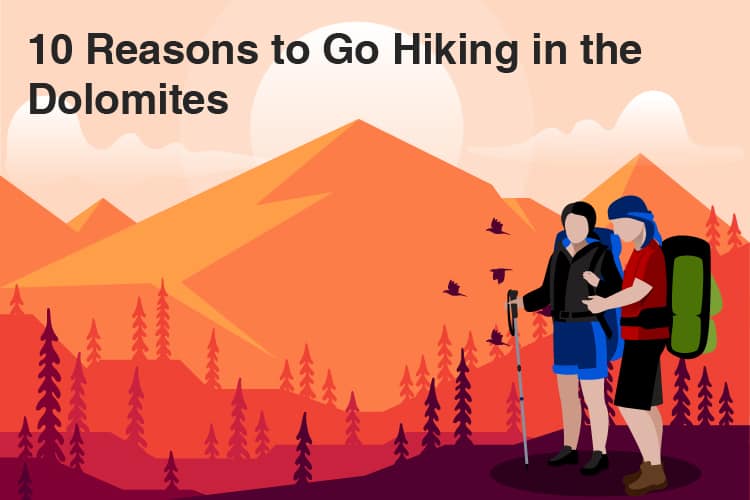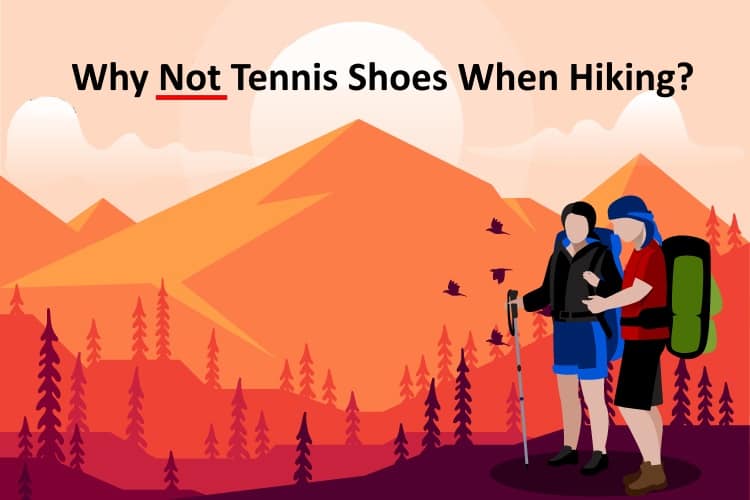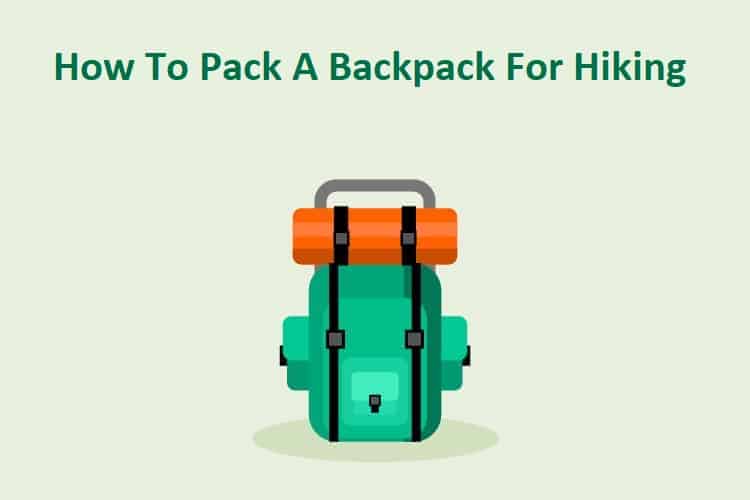Hiking is first and foremost about having an enjoyable experience in nature, solo or with family and friends. You don’t need the most expensive backpack, hiking shoes, or the latest in high-tech breathable apparel.
But having knowledge on your side will help keep you safer, and more comfortable, and help you get that much more from your hiking adventures.
Every seasoned hiker will develop their tips and tricks and, with time and miles under your belt, you will too. In the meantime, you can take advantage of the advice of the pros to help set yourself up for hiking success.
With that idea in mind, here are our top 10 hiking tips that you might not know you needed.
Tip 1 – Make Packing Easy with the ’10 Essentials’
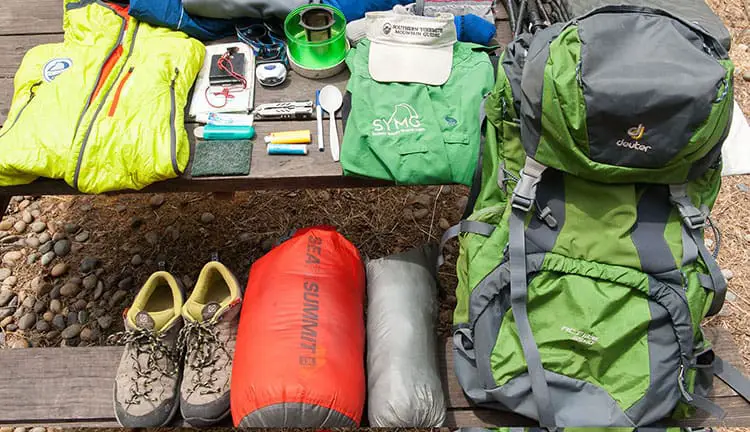
Overpacking or underpacking for a hike are both less than ideal situations.
Overpack and you’ll end up tiring yourself out from carrying a heavy backpack.
Underpack and you might find yourself in an emergency situation without the gear you need to get by.
Make packing easier and cover all your bases by always taking along these ’10 Essentials”:
- Food – Always take enough food (main meals + snacks) with you to cover your energy expenditure for the hike itself. You also want to bring extra food, in the event of an emergency. Dehydrated meals serve this purpose well.
- Water – The average hiker will drink roughly 1 quart (4 cups) of water every 2 hours. Pack a large enough water bottle or hydration pack to get you through at least a few hours of hike time and take along a compact water filtration system *more on this below*
- First-Aid – Basic first-aid and emergency items *more on this below*
- Flashlight/Headlamp – Get a flashlight or headlamp with 200+ lumens in case you end up stuck overnight
- Navigation – A phone and GPS are great, but a map and compass is always a no-fail must
- Sun Protection – Take sunscreen, SPF lip balm, hat with a visor, neck protection, sunglasses with UV protection
- Extra Clothes – Take an extra layer or two than you think you need and don’t forget a rain jacket!
- Multitool – A classic Swiss Army Knife or a modern multitool designed for outdoor use
- Fire – Take the tools needed to make a campfire in the event of an emergency
- Emergency Shelter -A DIY tarp-style shelter or bivvy works great and doesn’t weigh much
When selecting the actual items to cover each category, look for products that are high-quality and compact. All of these items should easily stow in a lightweight daypack and weigh only 3-5lbs.
Remember – Even a casual day hike on a trail you’re familiar with can take a bad turn. It’s better to have these items and not need them than find yourself in a situation where you wish you hadn’t left them at home.
Tip 2 – Stretch Before Leaving and After Rest-Breaks
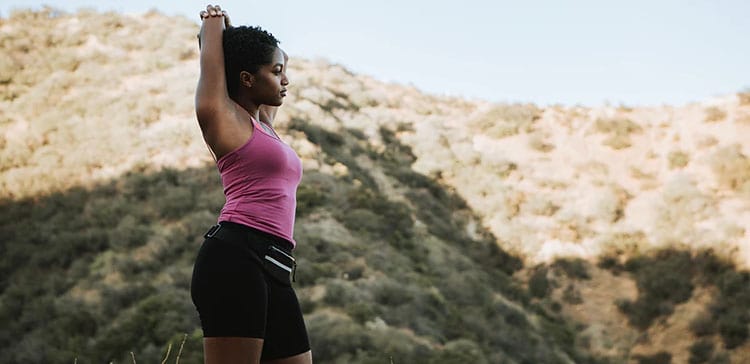
You wouldn’t just hop off the couch and immediately start lifting weights or running. Every workout starts with a warmup and you should do the same before every hike.
A good warmup consists of stretching before you set off. Some good stretches to do include quadricep stretches, hip stretch, inner thigh stretch, shoulder stretches, and back stretches. General stretches prior to working out will be perfectly fine for hiking.
Once you’ve stretched start off your hike at a slower pace, gradually working up to a faster past, and finally settling at a medium pace that won’t tire you out.
Warmups are not only for the beginning of a hike but also for any time you’ve sat for a while during your hike. When you stop to take a rest-break, do a few stretches to warm up your muscles again before heading out.
Tip 3 – Invest in a Pair of Merino Wool Socks

Far too many new hikers make the mistake of buying hiking footwear but forgetting how important socks are. Even if your boots fit perfectly, the wrong choice of socks can still mean you end up with painful blisters and sweaty feet.
One of the best types of socks to buy is merino wool socks or socks with a high merino wool content. Merino wool socks seem expensive, but any seasoned hiker will tell you that they’re worth every penny. The reason is that Merino wool socks offer the best comfort, moisture management, breathability, and durability than any other material.
While we don’t support the idea of spending money on high-priced apparel just for the sake of it, we fully recommend hikers invest in good pair of merino wool socks designed for hiking. They’ll outlast and outperform your synthetic socks and keep your feet happy on every hike.
Tip 4 – Make Your Load as Light as Possible
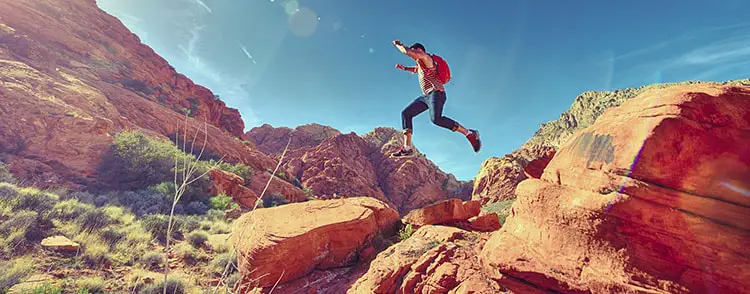
Ultralight backpackers might have their practice down to an extreme art (i.e. cutting toothbrushes in half), but you can still take the mindset into consideration.
The lighter your pack, the more energy you’ll have and the more enjoyable your hike will be. Overpacking only leads to fatigue and a hike possibly cut short.
When you’re putting together your gear for the day, stop and take a serious look at it. Is every item really necessary? Are you really going to use your giant fancy camera? Do you really need to bring your mini camp cookstove set when you can just take a pre-made meal?
Try to leave any items that you don’t really need at home. As for the items you do need, choose the most compact and lightweight option for it without sacrificing quality.
Tip 5 – Pack Gear That Serves Multiple Purposes
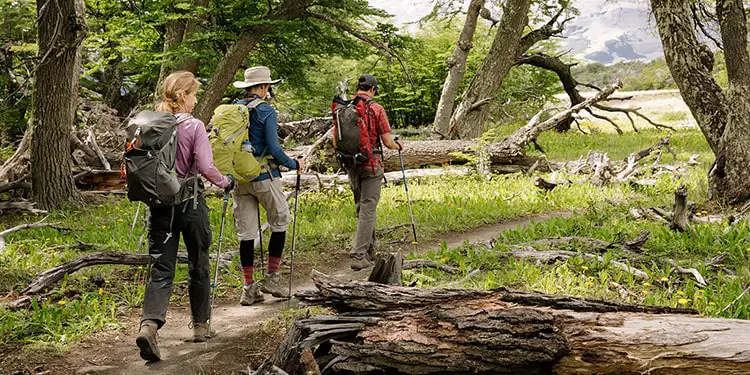
The average casual hiker doesn’t need to take a lot of gear with them on typical day hikes, but when you do buy gear you should look for items that serve more than one purpose. Selecting dual-purpose gear saves space in your pack and keeps your wallet happy.
Some examples of dual-purpose gear include:
- Trekking poles (can be used as shelter tent poles)
- Sleeping mats (great to use as a seat on hikes)
- Bandana (towel, face covers, gaiters, neck protection)
- Swiss Army Knife/Multitool (knife, tweezers, scissors)
- Poncho tarp (rain protection, emergency shelter, pack cover)
Tip 6 – Make Your Own Mini First Aid Kit
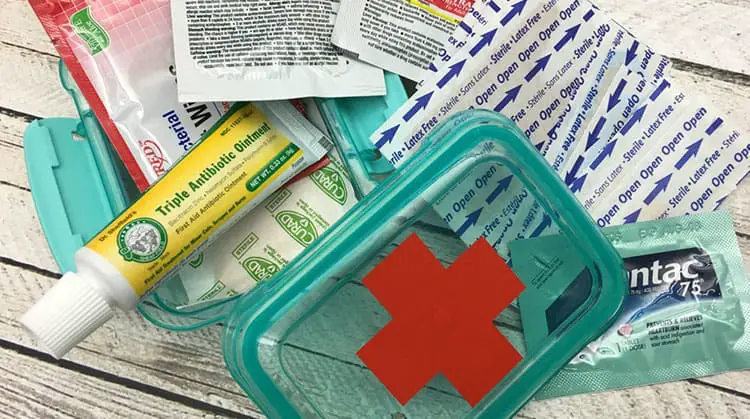
As mentioned earlier in our first tip, it’s important to always have some sort of first aid kit with you on every hike. Unfortunately, while store-bought first-aid kits are convenient, they’re also often overpriced and oversized.
Making your own mini first-aid kit is easy and much more affordable. We recommend you use a waterproof bag or small closing box for your kit. Waterproof, zippered bags are a great choice since they’ll be a bit more compact than a box.
As far as what you should pack in your mini first-aid kit, a basic list includes:
- Assorted bandages
- Blister pads
- Gauze pads
- Sterile dressing
- Antiseptic wipes
- Alcohol pads
- Surgical tape
- Iodine pads
- Tourniquet
- Tweezers
- Cotton swabs
- Mini scissors
- Safety pins
- Antacid tabs
- Antihistamines
- Pain relief pills
- Hydrocortisone cream
If you’re feeling a bit overwhelmed and really prefer buying a pre-made kit, this General Medi Mini First Aid Kit on Amazon is a great choice and will fit into any daypack.
Tip 7 – Don’t Forget the Insect Repellent

Everybody knows how important sun protection is on a hike or any other outdoor activity. Chances are you’ll layer on the sunscreen before you hike, along with using lip balm, sunglasses, and a hat with a visor to keep the harsh rays at bay.
But are you also armed against another common foe of the hiker?
It’s really easy to forget about how important insect repellent is until you’re on the trail being swarmed by tiny flies and mosquitoes. Sunscreens can really ruin a hike, but dealing with bugs can really kill the mood of a hike in no time.
Pick up a powerful bug spray (there are DEET-free options as well) and apply it before your hike. If you’ll be hiking for a while, especially in warm weather where you’ll be sweating, take along a mini-bottle for reapplication.
How bad the bugs will be depends on the region and season, but it’s always a good idea to have a small bottle of spray in your pack just in case. Summer hikes, especially in humid weather and close by water, can add up to a terrible experience if you’re not prepared.
Tip 8 – Eat Foods/Snacks You’re Familiar With
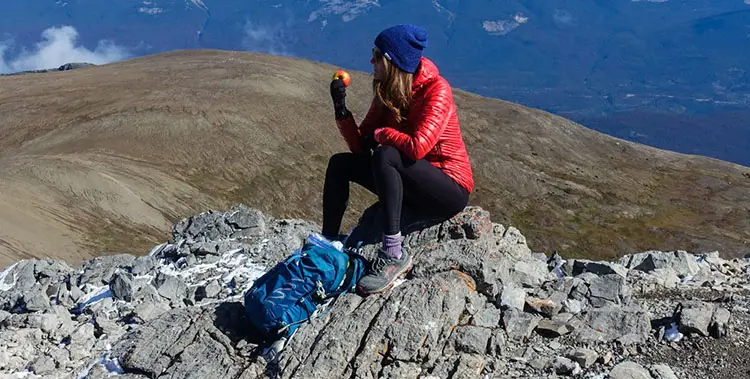
An upset stomach is never a pleasant situation and being out on a hike, far from the comfort of a bathroom, is perhaps one of the least convenient times to deal with a rumbling stomach. The best way to avoid stomach troubles is to only pack food you’re already used to eating.
Trying out new meals and snacks during a hike might seem like a great experience, but if you’re not accustomed to certain items your stomach might disagree with you. This is more so true for dehydrated camping meals and similar style rations.
It might seem counterintuitive, but even packing last night’s cold pizza could be a better idea than that perfectly calibrated nutritional camp meal ration you picked up from the store. Obviously, you should try to pack healthy foods, but the concept remains the same.
Trying out new meals and snacks is best done at home before your trip. We think that’s really a bonus for anyone that wants an excuse to cook up camp meals at home for fun.
Tip 9 – Don’t Wear Your Brand New Shoes
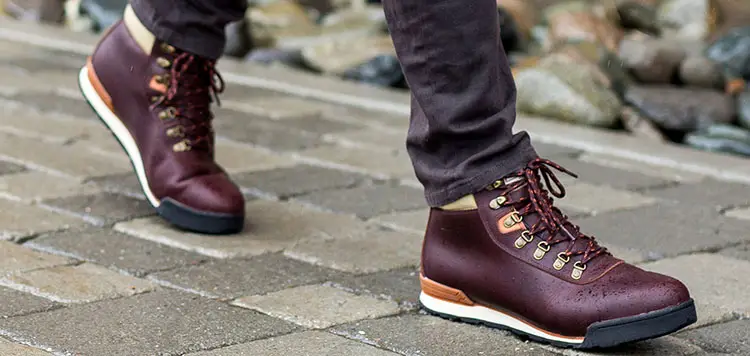
Almost every hiker at some point has made the mistake of wearing new hiking shoes or boots without breaking them in first and regretted it within a few hours. Sore feet, blisters, and hotspots are not at all something you’ll want to experience on any hike, especially a hike that takes involves hours of travel over anything but groomed trails.
Every pair of hiking footwear you buy should be properly broken-in before you wear them out, but it’s especially important for hiking boots and footwear made of leather. Synthetic hiking shoes are the easiest to break in while hiking boots with full leather construction can take quite a while before they’re comfortable.
Break-in your new footwear with casual walks and move up to short hikes. As they feel more comfortable you can add the weight of a daypack and more hours of hike time.
Take your time when breaking-in new hiking footwear, especially leather hiking boots, and don’t be tempted by strange “shortcuts” such as soaking your boots in water and wearing them until they dry. It’ll only damage your footwear and hurt your feet in the process.
Tip 10 – Use a Water Filter and Carry Minimal Water
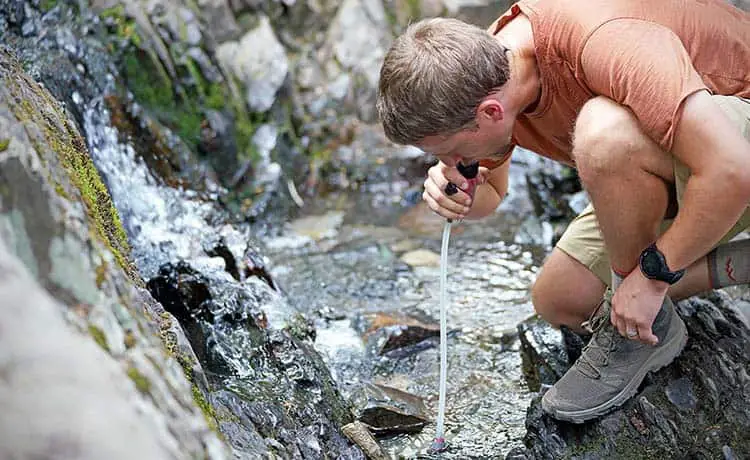
Staying hydrated is one of the cardinal rules of hiking, but that doesn’t mean you should carry multiple bottles of water with you.
Water is heavy and water bottles take up a lot of space in a backpack. Unless you’re hiking in an area where water sources are scarce, a much smart way to go is to bring only one or two main bottles and a compact water filtration system designed for hiking/camping.
Examples of compact water filtration systems that are perfect for hikers include the Sawyer Mini Water Filtration System and the Katadyn Vario Water Filter. Another innovative filtration option is the LifeStraw Go Water Filter Bottles, which will take care of your need for a bottle as well as a water filtration system.
If you already have a water bottle you love, the LifeStraw Universal Water Bottle Filter Adapter could work for you. Another option is a larger water filtration system, like the Platypus GravityWorks, which you can use at a campsite for multi-day hikes.
We always recommend that hikers take along a few water purification tabs, just in case. Keep a few in a waterproof plastic bag tucked in a pocket of your daypack.
Put These Tips Into Action and Go Hit the Trail!
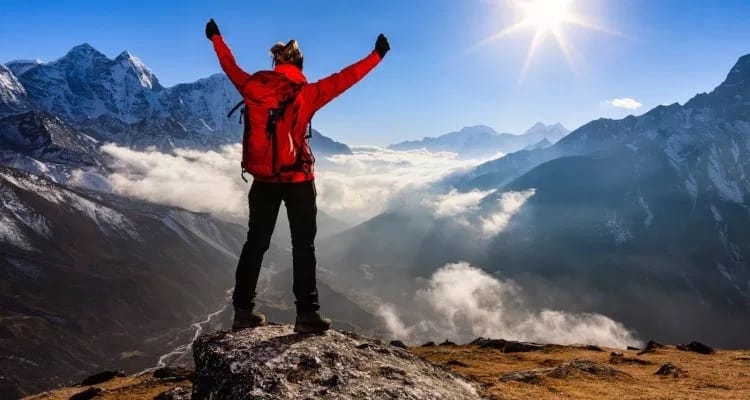
Rather than focusing on what the hiking pros are wearing or carrying, look more into the advice they offer when it comes to hiking smarter.
Hiking is a super rewarding hobby to take up and it doesn’t require any kind of expensive gear or tools to really get a lot of enjoyment from it. By taking these 10 tips to heart, you can really improve your hiking experience, regardless of how much experience you already have.
Do you have any hiking tips and tricks of your own? We love to hear from all of our readers and encourage you to leave comments with your own advice to help out your fellow hikers.
References:


